BY JOSEPH TREVITHICK
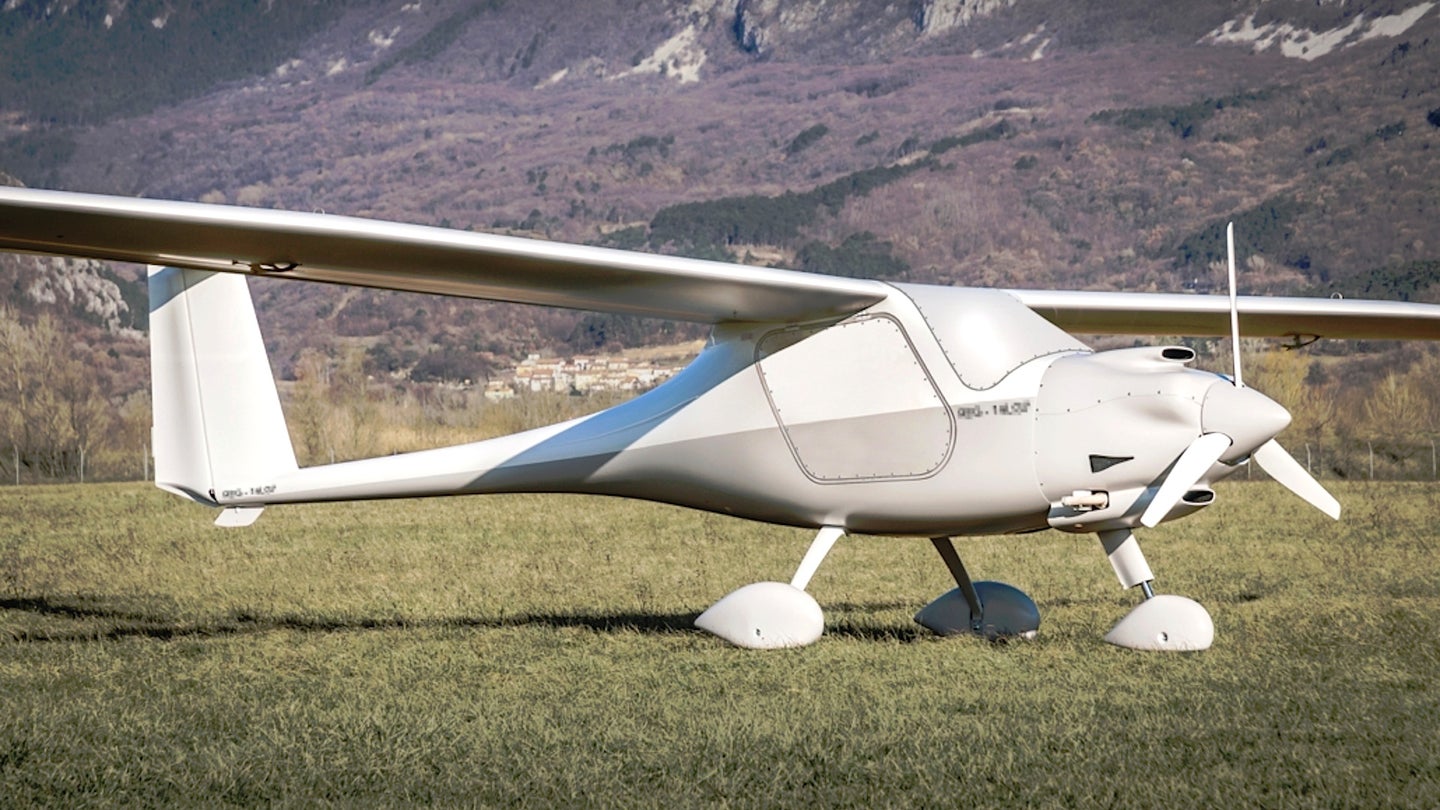
The U.S. military has confirmed that the secretive Joint Special Operations Command, or other U.S. government entities operating in cooperation with it, has been flying a new type of drone in the Middle East that is designed to be extremely quiet and have an innocuous outward appearance. The new details about the Long Endurance Aircraft Program have come to light after one of these unmanned planes, derived from the Pipistrel Sinus powered glider, crashed at Erbil International Airport in Iraq last year.
The Long Endurance Aircraft Program (LEAP) drone in question, identified only as AV009, crashed at Erbil on July 24, 2020, according to a heavily redacted copy of the official accident report that The War Zone obtained via the Freedom of Information Act. The unmanned aircraft suddenly and unexpectedly pitched nose down while coming in to land at the airport after a sortie. The drone hit the ground, bounced back up into the air, and then came back down, eventually coming to rest alongside the runway. The mishap resulted in the front-mounted propeller striking ground and the landing gear collapsing. It also caused significant enough damage to the right wing that fuel leaked onto the ground.
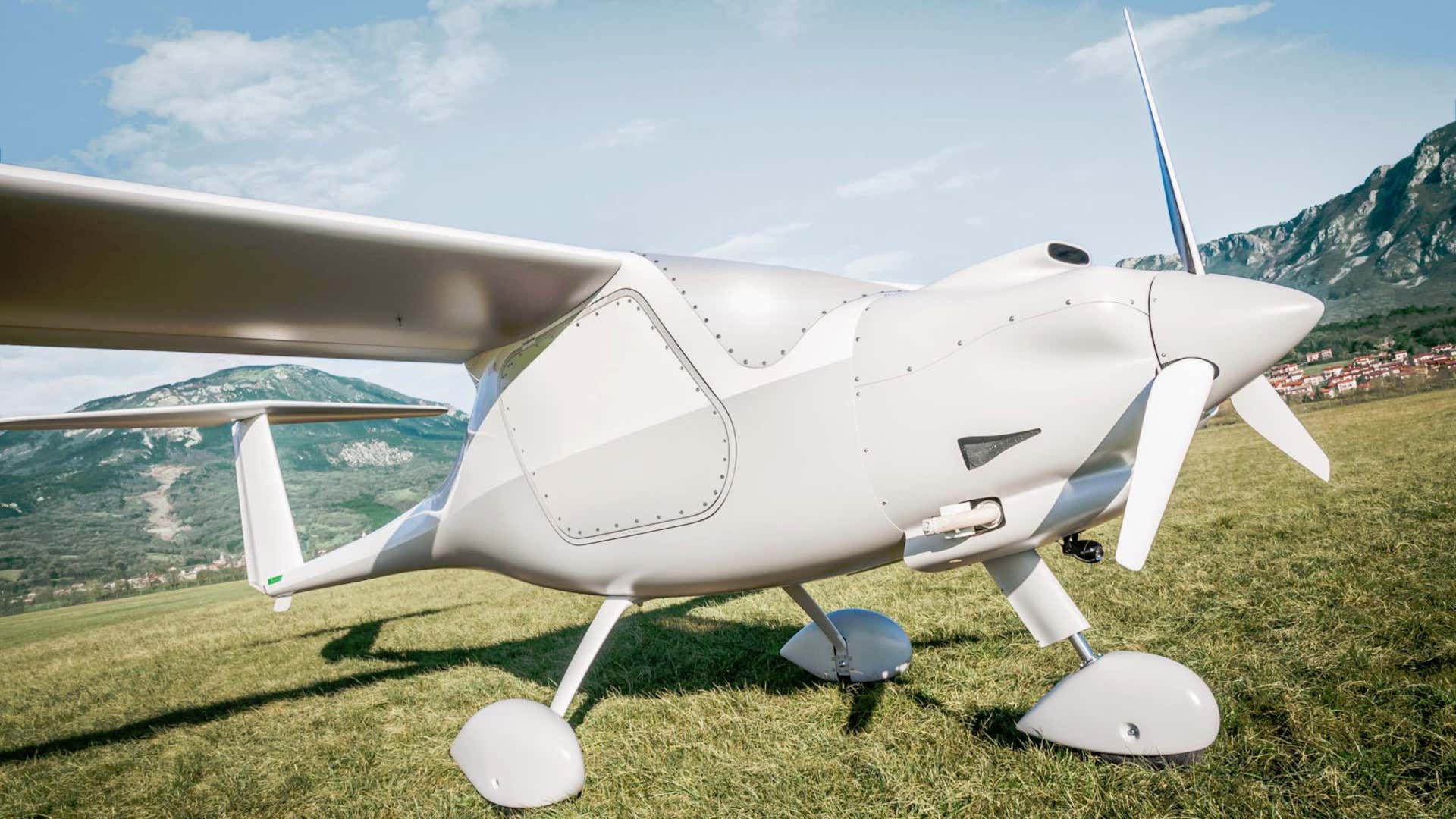
PIPISTREL-USA
An unmanned Pipistrel aircraft similar to the one US Special Operations Command (SOCOM) acquired as part of the Long Endurance Aircraft Program.
The immediate cause of the accident and any associated factors, as well as any details about recommended disciplinary action or changes to tactics, techniques, and procedures made in light of the mishap, are entirely redacted. The report does mention poor weather over Erbil, as well as an unspecified mission area, during the sortie. The Air Force said that aircraft, valued at $3.4 million, was a "total loss."
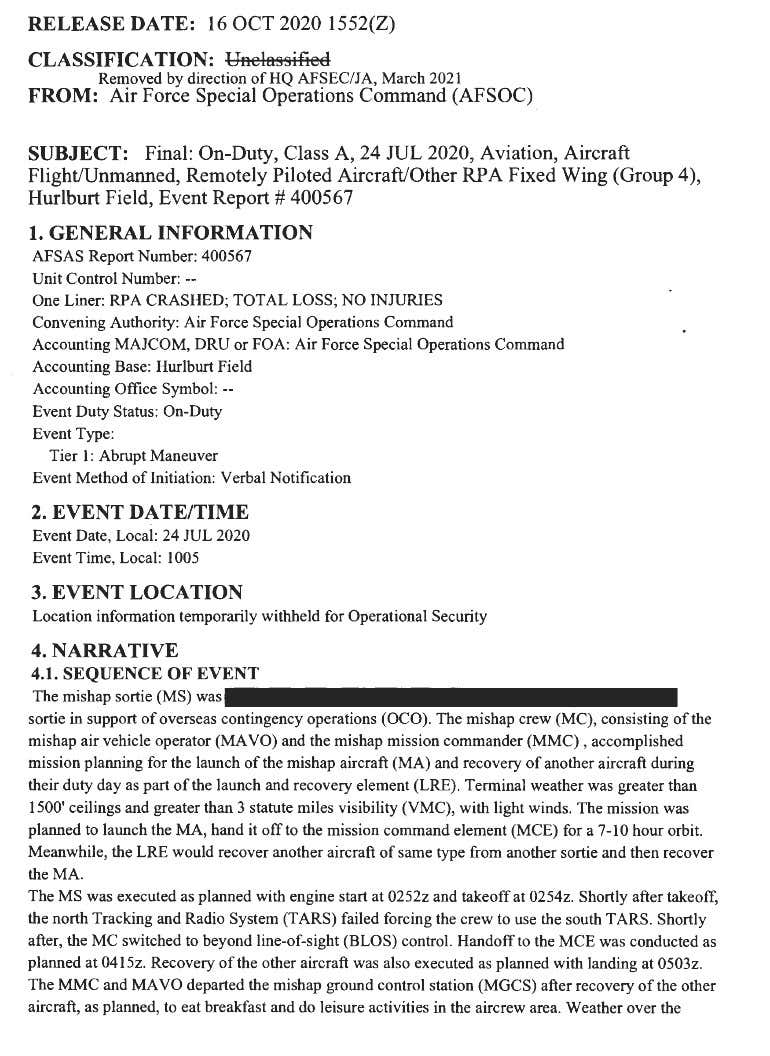
USAF VIA FOIA
A portion of the accident report regarding the crash of a LEAP aircraft in Iraq last year.
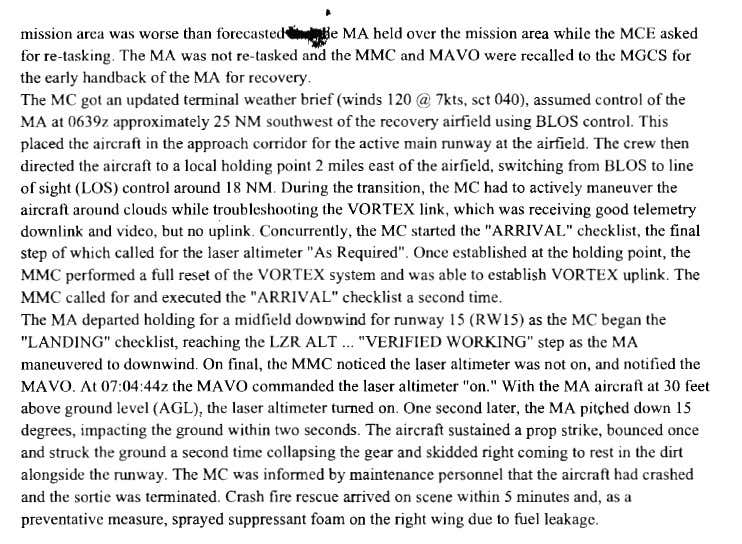
USAF
Air Force Magazine had been first to disclose that a mishap involving what was then described as an unidentified "remotely piloted vehicle," or RPA, had occurred at an "undisclosed location" overseas on July 24, 2020. That outlet had obtained a spreadsheet of all Class A and B mishaps the Air Force had suffered during the 2020 Fiscal Year, which ended on Sept. 30, 2020. There had been speculation at the time that the crashed drone could have been an RQ-170 Sentinel, though the spreadsheet said that the unmanned aircraft belonged to Air Force Special Operations Command (AFSOC). Units assigned to Air Combat Command (ACC) are the only ones publicly known to fly the stealthy RQ-170.
The official accident report does not provide a detailed description of the LEAP aircraft, but does say that at least this particular example was government-owned and contractor-operated at the time of the incident. The document also identifies the individual who was operating the drone during the mishap as an employee of Technology Service Corporation (TSC). The Pentagon announced on April 14, 2020, that SOCOM had raised the cost ceiling on an existing contract with TSC to support the LEAP, which "provides aircraft, turrets and spares required for a full multi-intelligence capability at Joint Special Operations Command [JSOC]," to $63 million. In February of this year, that ceiling was again increased, to $75 million, "to accommodate a longer performance period."
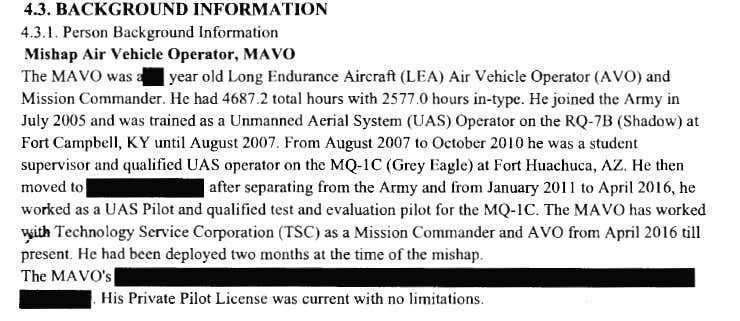
USAF VIA FOIA
A section describing the background of the contractor who was operating the LEAP aircraft at the time of the crash.
In December 2019, the Air Force Research Laboratory (AFRL) had also announced that its Center for Rapid Innovation had completed a series of flight tests at Dugway Proving Ground in Utah in support of what was referred to as the Ultra Long Endurance Aircraft Platform (Ultra LEAP) program. That testing ended with "a two and a half-day continuous flight demonstration" of a "high-performance, cost-effective, sport-class commercial airframe converted to a fully automated system with autonomous takeoff and landing capabilities."
AFRL said at the time that "the system could be ready for operational fielding as soon as 2020." The Air Force said it had only taken 10 months to go from "concept to first flight" and that the "high level of automation" would simply operator training and logistics support requirements, as well as help keep operating and maintenance costs low.
"U.S. Special Operations Command's long-endurance aircraft program includes Pipistrel Sinus aircraft converted by the U.S. Air Force Research Laboratory into an unmanned aerial system," U.S. Navy Commander Tim Hawkins, a SOCOM spokesperson, subsequently confirmed to The War Zone. "SOCOM has been assessing this platform as an option as we work with our military services and industry partners to identify low-cost, high-endurance airborne intelligence, surveillance and reconnaissance solutions. This unmanned aerial system is contractor-operated and has a payload that includes a combination of full-motion video and signals intelligence sensors."
The original Pipistrel Sinus design dates back to the mid-1990s and numerous subvariants, including easier-to-store versions marketed as the Virus line, have been produced since then. The company, which has its main headquarters in Slovenia, says that the current Sinus 912 model has a maximum speed of just under 137 miles per hour, has a cruise speed closer to 124 miles per hour, and has a stall speed of just under 40 miles per hour with its flaps deployed.
No comments:
Post a Comment